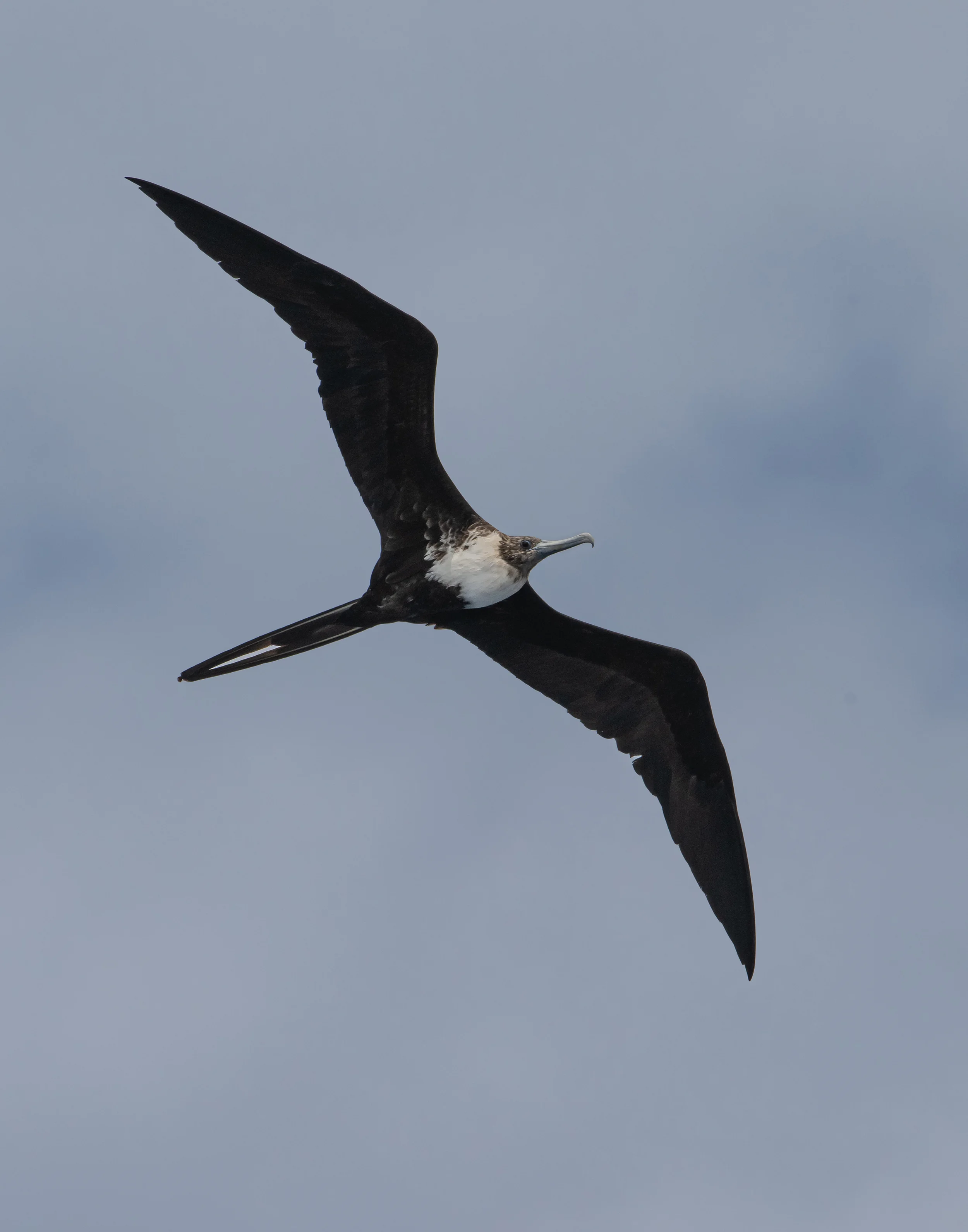Kirk Zufelt and my 'Covid-delayed' expedition to Cape Verde to study Fea's Petrel at sea finally happened from 14-21 April 2023. The live-on-board catamaran journey focused on the north-western islands and started and finished at Mindelo, São Vicente. Over the week we undertook mass chumming over numerous undersea banks, from 30 km north-west of Santo Antão in the west to 15 km south of São Nicolau in the east, including Raso Bank, between Raso and São Nicolau.
On 18 April we were inshore to the south of Raso enjoying the small Red-footed Booby and Brown Booby colonies when Angus Wilson shouted "Frigatebird!" I was shocked by the call as it was well known that the tiny, ever-decreasing Cape Verde Magnificent Frigatebird population had finally fizzled out in 2015. Had those last two females of 2016 hung on in the backwaters of Cape Verde? A quick check with binoculars confirmed that our individual was a Magnificent Frigatebird. It was a female, having a distinctive dark hood and white chest, the chest with dark median indents at the fore and rear. Closer inspection revealed signs of immaturity such as white streaking within the dark hood.
The bird was over the shore for about 10 minutes, occasionally attacking Red-billed Tropicbirds and boobies, and successfully forcing a tropicbird to disgorge. She then drifted off northwards and we did not see her again. This was evidently a vagrant bird, presumably from the Caribbean.

This Magnificent Frigatebird is the first documented sighting in Cape Verde since the resident population became extirpated (Kirk Zufelt).
The rest of the expedition was a success. Of special note, we had 34 encounters with Fea's Petrel. Boyd's Shearwaters were occasionally seen throughout the trip, with a notable concentration over Raso Bank, involving feeding groups of at least 10 birds on several occasions. However, despite daily mass chumming, including over Raso Bank, only one Cape Verde Storm Petrel was seen, briefly at chum 30 km north-west of Santo Antão (thus an oceanic rather than an inter-island sighting). The storm petrel has a protracted or bimodal breeding strategy and one of two peak egg-laying periods between February and May. Evidently, the species forages outside of the islands in the daytime. During repositioning cruises from Argentina to Cape Verde – known as 'The Atlantic Odyssey' – in 2006, 2010, 2012 and 2018, we saw Cape Verde Storm Petrels to the south of the islands during the day before arriving in Cape Verde. The current expedition was successful in attracting storm petrels, though; most notable were at least 60 Leach's Storm Petrels in the slick south of São Nicolau (plus White-faced and Wilson's Storm Petrels), and more than 120 White-faced Storm Petrels in the slick north-west of Santo Antão (alongside Leach's Storm Petrels and one Cape Verde Storm Petrel).

The Magnificent Frigatebird was watched kleptoparasitising Red-billed Tropicbirds (Angus Wilson).



